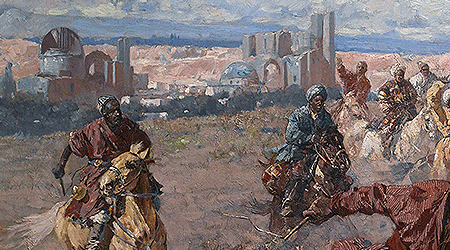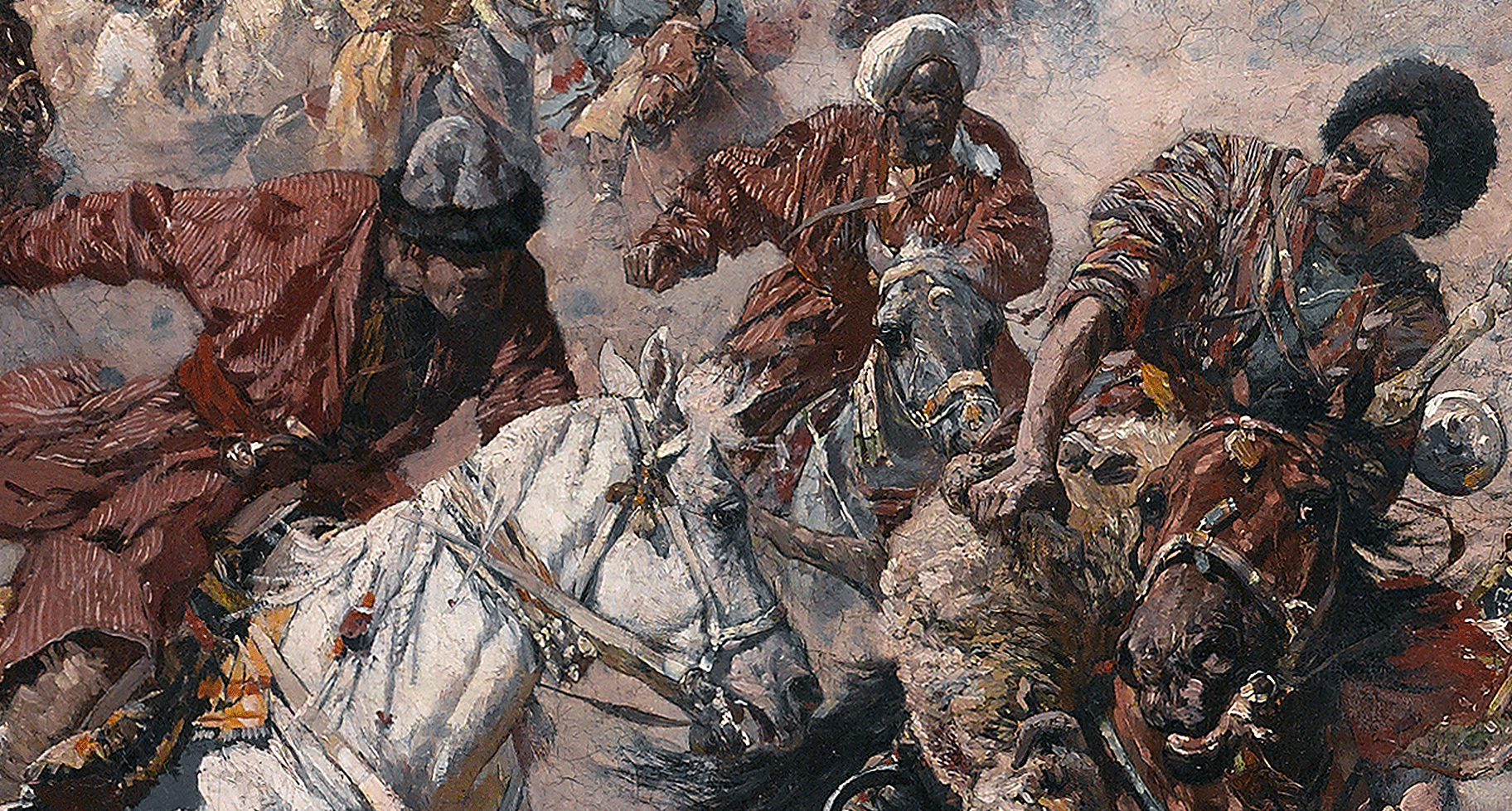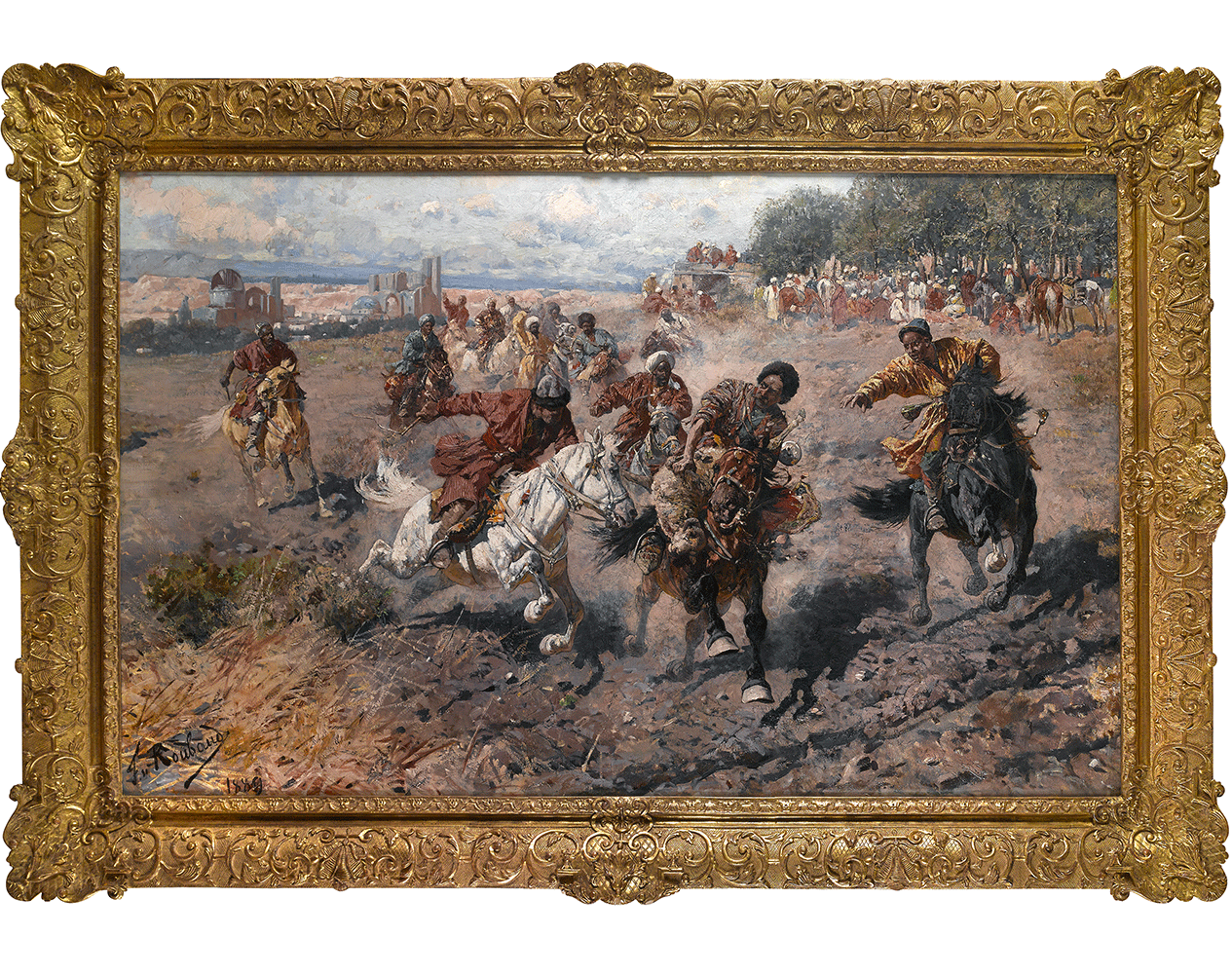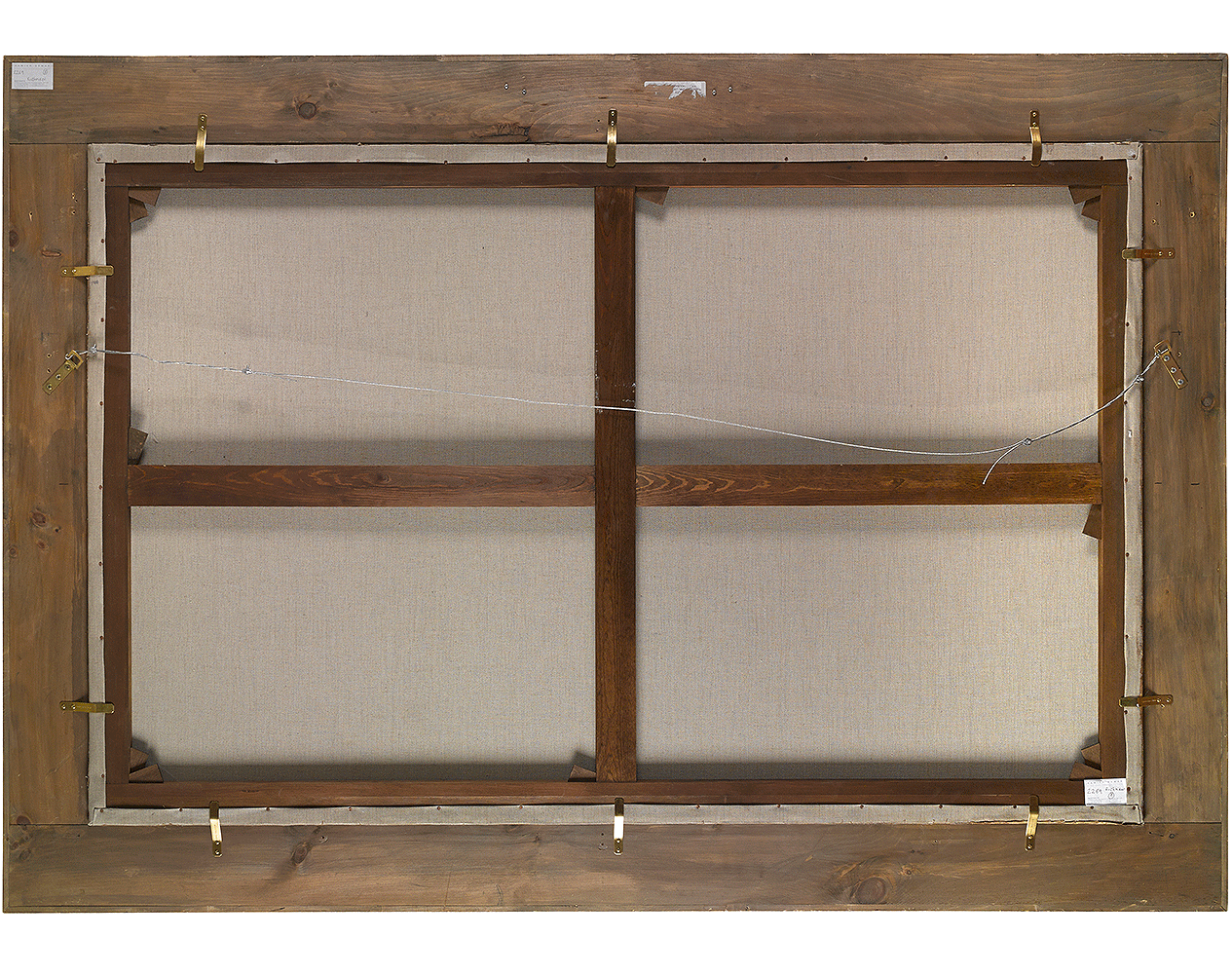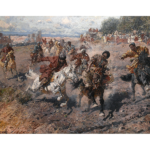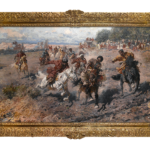Buzkashi ranks among the most important paintings by Roubaud in private hands. The large and impressive oil painting is a rare example of the artist’s mature style. The painting belongs to the key period of the artist’s career. During the late 1880’s – early 1890’s Roubaud created his most accomplished masterpieces, including the famous Caucasus cycle (1885-1893) and its centerpiece The Storm of Achulgo (The Museum of Graphic Arts in Makhachkala, Daghestan). The period was marked by Roubaud’s increased official recognition: he had his first solo exhibitions in St.Petersburg (1898), Paris (1891) and Madrid (1892). In 1890, he was admitted to the Bavarian Academy of Fine Arts and gained several prestigious awards, etc. Most artworks from this period are in museums (The Russian Museum, St.Petersburg; Museum-panorama The Borodino Battle, Moscow; P. S. Gamsatova Dagestan Museum of Fine Arts, Machachkala; A. Tacho Godi Dagestan State Museum, Machachkala; Museum of History of Azerbaijan, Baku).
Buzkashi or kokpar (literally “goat bashing” in Turkic, buz is Turkic for “goat” and kashi means “bashing”) is Central Asian sport in which horse-mounted players attempt to drag a goat carcass toward a goal. Buzkashi is played amongst Kyrgyz, Pashtuns, Kazakhs, Uzbeks, Tajiks, and Turkmens. It is widely believed the game was first played in the Oxus basin, now known as the Amu Darya, along a border of Afghanistan. Expert horsemen, the nomads of northern Afghanistan fought Alexander the Great’s triumphant army to a standstill. When the ancient Greeks first saw these formidable horsemen of Central Asia, they believed the legend of the centaur (half horse, half man) had materialized. For any witness of modern Buzkashi, this reaction is easily understood. Before moving on to India, Alexander replenished his cavalry with this sturdy breed of horse.
Many people associate Buzkashi with the famous Genghis Khan. The Mongol horsemen were adept at advancing swiftly on enemy campsites and, without dismounting, swooping up sheep, goats, and other pillage at a full gallop. One theory is that in retaliation, the inhabitants of northern Afghanistan established a mounted defence against the raids and this practice might be the direct forbearer of today’s Buzkashi. As speculative as this story on the origins of Buzkashi might be, it seems a plausible re-enactment of the campaigns of the great Mongol and his Golden Horde in Asia Minor.
Franz Alexyeevich Roubaud (1856-1928) – famous Russian battle and genre painter. Born in Odessa in 1856 to a Catholic family of French descent. Since 1865, he studied at the Odessa Drawing School, and since 1877 – at the Munich Academy of Fine Arts. Having returned to Russia, Franz Roubaud taught at the Imperial Academy of Fine Arts in St.Petersburg. In 1913 he left Russia and settled in Munich, where he lived for the rest of his life.
The first success came to Roubaud in 1880’s when he painted 18 monumental canvases depicting the conquest of Caucasus by the Russian Empire. Roubaud is one of the most celebrated Russian battle painters, a master of grandiose size canvases. His most famous works are The Defense of Sebastopol, 1902-1904, and Panorama of the Battle of Borodino, 1912. Roubaud’s paintings are in the collection of the Pinacotheque Museum in Munich, the Tretyakov Gallery in Moscow, the Russian Museum in St.Petersburg and many others.

